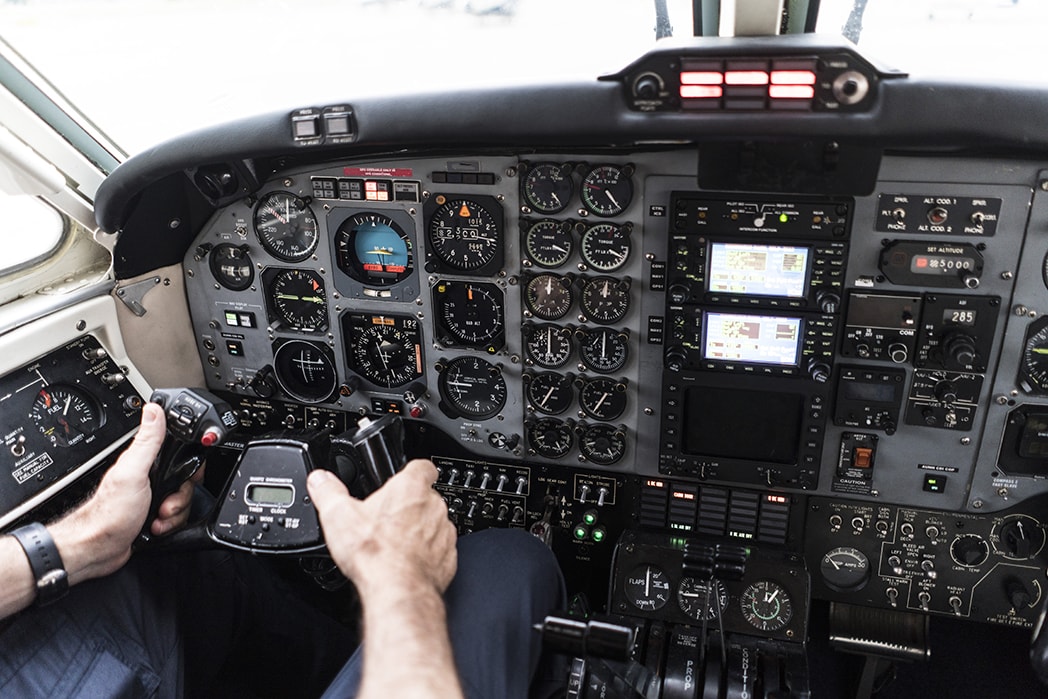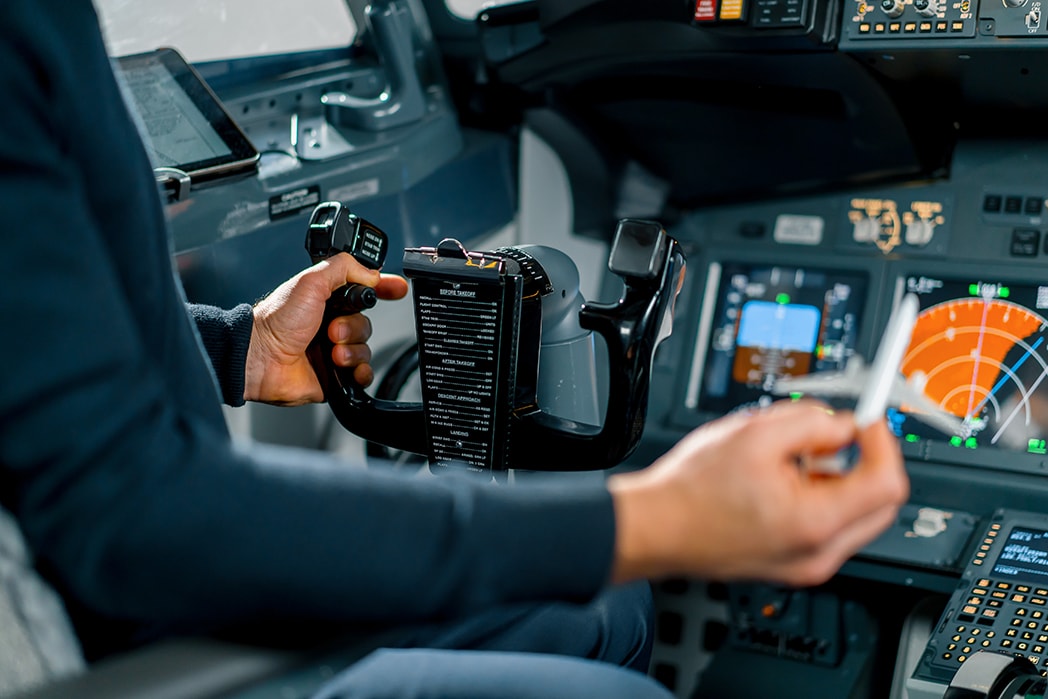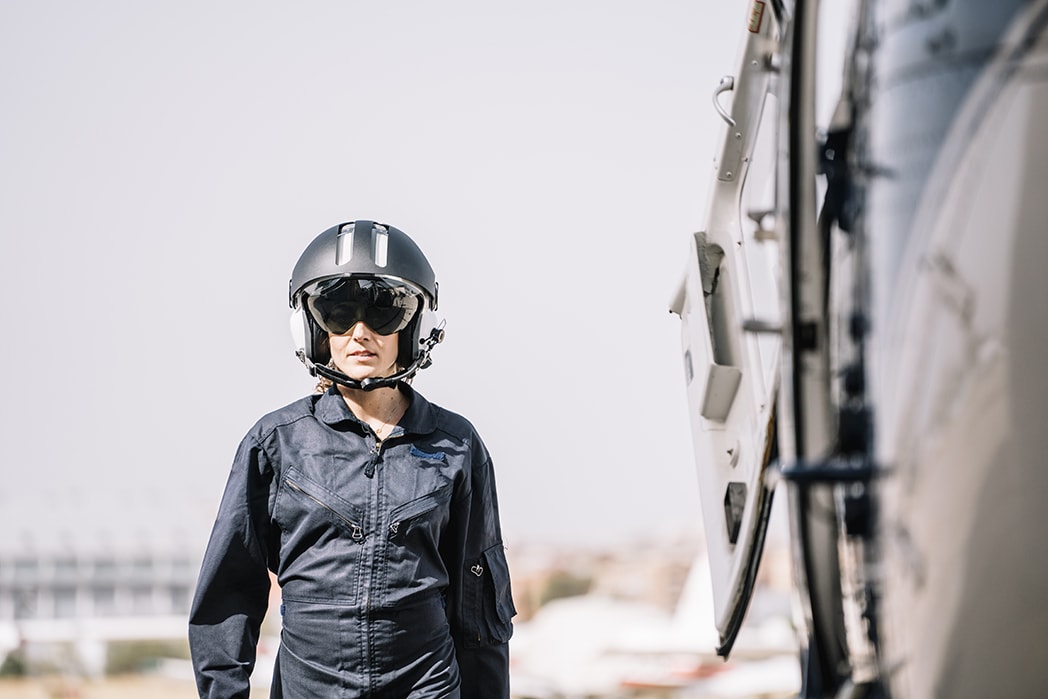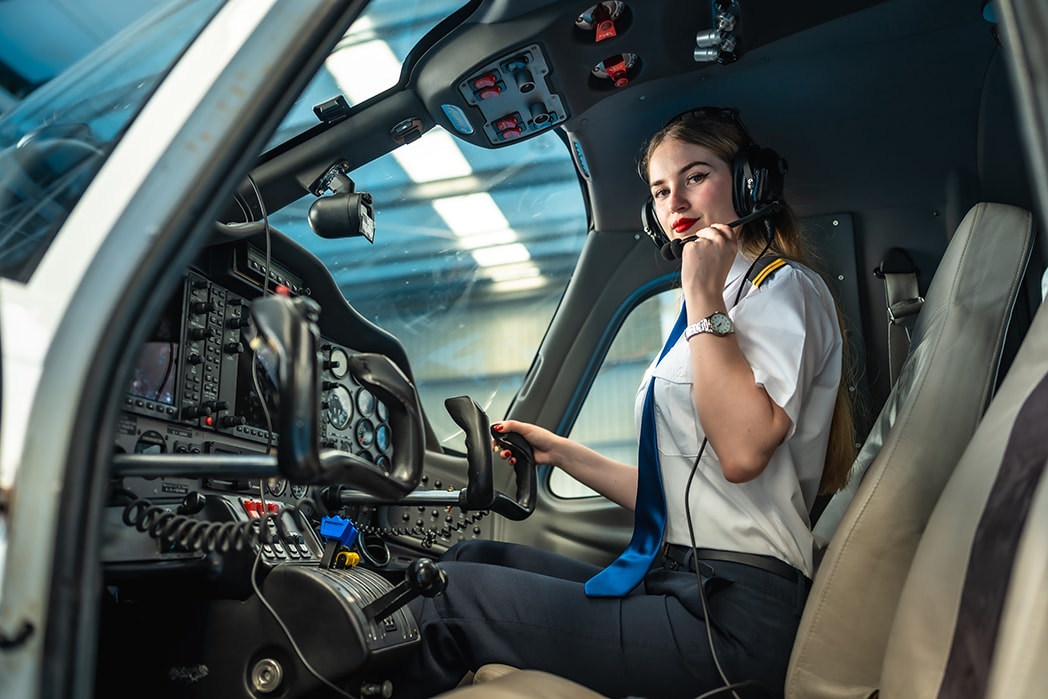Comprehensive Guide to Pilot Equipment Requirements
Jul 28, 2025
Pilots need to know what equipment is required for safe and legal flight, and what the pilot equipment requirements are. This guide covers the instruments and tools to meet FAA regulations for VFR and IFR. Make sure your aircraft is ready and compliant.
Highlights
-
Pilots must meet equipment requirements for VFR and IFR flights, including airspeed indicators and altimeters for safety and compliance.
-
For night VFR, additional equipment like position lights and landing lights is required to see and be seen.
-
The Minimum Equipment List (MEL) allows for flexibility, it tells you which equipment can be INOP and still be safe.
Overview of Pilot Equipment Requirements

Aviation regulations can be overwhelming but understanding pilot equipment requirements is key to safety and compliance.
Here are the VFR equipment and instruments required for 14 CFR Part 91 Subpart C and 14 CFR 91.205. This outlines the instruments and equipment required for safe flight operations including instrument and equipment requirements.
VFR requires specific instruments and equipment for day and night flying. The FAA’s VFR equipment requirements cover all conditions of flight and must be followed by all pilots to keep the aircraft airworthy.
All instruments and equipment in a powered civil aircraft must be operational to be compliant with safety regulations.
Knowing these VFR requirements will keep you safe and legal and give you the confidence to fly safely and handle any situation in a normal manner.
Essential Instruments for VFR Flight
For VFR you need to have the following instruments on board to fly safe. These are:
-
Airspeed indicator
-
Altimeter
-
Magnetic direction indicator
Each of these instruments is critical to control and situational awareness during flight.
Airspeed indicator shows the airspeed of the aircraft, to prevent stalling and fly at the right speed.
Altimeter measures the height above sea level or ground level, to avoid terrain and fly at the right altitude, as it’s affected by barometric pressure.
It functions based on a pressure system, which detects atmospheric changes to determine altitude. Magnetic direction indicator shows the direction of the aircraft relative to magnetic north, to navigate and orient.
Essential instruments for engine monitoring:
-
Fuel gauge for each tank to prevent engine failure due to fuel exhaustion.
-
Tachometer for each engine to get critical engine information.
-
Oil pressure gauge to ensure the oil in the engine is within safe parameters.
These instruments and equipment are the pilot’s tools to control, navigate, and fly safe. Check them regularly as part of the preflight and flight.
A solid understanding of the Essential Instruments for VFR Flight ensures that pilots are well-prepared to meet regulatory requirements and handle flight operations safely.
Additional Requirements for Night VFR
When the sun goes down and the skies get dark, more equipment is required for safe VFR flight. For night VFR, the aircraft must have approved position lights and an anticollision light system to be visible during flight.
These lights make the aircraft visible to other pilots and help prevent mid-air collisions.
The anticollision light system, which can be approved red or white, adds an extra layer of safety by making the aircraft more visible in the dark.
For aircraft manufactured after a certain date, an approved anticollision light system is mandatory. This is critical so the aircraft can be seen by other air traffic and reduce the risk of accidents.
Night VFR also requires at least one electric landing light to be visible during landing. This light helps the pilot see the runway and any obstacles, so a safe descent and touchdown.
These additional requirements, including installed electrical systems and night vision goggle operations, can’t be overstated as they make a big difference in safety by increasing visibility and situational awareness especially with electrical energy during landing.
By meeting these night VFR equipment requirements, pilots can fly after dark with confidence knowing their aircraft can handle the night flying challenges while being safe and compliant.
IFR Specific Equipment
IFR requires more advanced equipment than VFR. VFR has lower standards. Flying in instrument meteorological conditions requires specific equipment to maintain spatial awareness and altitude accuracy.
Key equipment for IFR are a gyroscopic rate-of-turn indicator, slip-skid indicator and adjustable altimeter.
The gyroscopic rate-of-turn indicator and slip-skid indicator are essential for control and balance in flight.
These instruments help you understand the aircraft’s turn rate and lateral movement which is critical for precise maneuvering in instrument flight.
An adjustable altimeter gives you accurate altitude readings which is crucial for safe navigation and terrain avoidance.
An attitude indicator is another must have instrument for IFR. It gives you real time information of the aircraft’s orientation to the artificial horizon so you can maintain proper flight attitudes even when visibility is zero.
This instrument is essential for control and safe flight in IFR conditions including bank indicator.
Having these equipment in your aircraft allows you to fly IFR safely and confidently. These are the tools to handle the challenges of control, navigation and compliance under instrument flight rules.
Minimum Equipment List (MEL)

The Minimum Equipment List (MEL) is a vital document that lists the equipment that can be inoperative and the aircraft can still be safe to fly.
This document ensures the aircraft can be airworthy even with certain systems or equipment not working provided certain conditions and limitations are met.
MELs categorise equipment by its safety of flight importance so you have operational flexibility while still meeting safety standards.
The MEL outlines the conditions under which certain equipment can be inoperative, any limitations and alternative safety measures that must be in place. This structured approach helps you decide if an aircraft can continue to fly or needs to be maintenance now.
Operators must follow MELs to be compliant and safe. FAA says to keep MELs up to date to avoid non-compliance. Understanding and following the MEL helps pilots and operators manage equipment issues while being safe and compliant.
FAA Guidance on Equipment Requirements

The federal aviation administration develops and approves Master Minimum Equipment Lists (MMELs) for every aircraft type. MMELs identify the required equipment for safe and compliant flight and is the foundation for creating custom MELs that address specific operational risks.
Operators must create a custom MEL based on the MMEL and their aircraft’s operational conditions.
Custom MELs are important because they address specific operational challenges and safety management. By customizing the MEL to their needs, operators can be compliant with FAA regulations and safe.
91.205 outlines the additional requirements for night VFR vs daytime VFR. Following these rules is compliance and safety. The FAA has guidance to help you navigate the equipment compliance maze.
Operators can run into trouble when an STC holder is not available and have to get relief through a qualified applicant for MMEL/MEL.
The MEL is more restrictive than the MMEL so following these guidelines is key to safety and compliance. Following FAA guidance will help you manage your equipment requirements and ensure flight safety.
Special Considerations for Powered Civil Aircraft
Powered civil aircraft have special considerations that need to be addressed to fly safely and compliant.
One of the required equipment for IFR is the emergency locator transmitter (ELT). This is critical to locate an aircraft in distress and get rescue operations underway.
ELT is required and must be operational and maintained. Aircraft with retractable landing gear require a landing gear position indicator to prevent landing accidents.
These requirements are to make powered civil aircraft with standard safer.
Following these requirements will make sure aircraft can handle all flight scenarios and comply with regulations, US airworthiness and safety including airworthiness certificate.
Airworthiness and Inspection Acceptance Records
Detailed records are key to showing compliance with airworthiness and to prove an aircraft is airworthy. These records will show all maintenance done to the aircraft to verify the aircraft meets regulations and is flyable.
If you don’t have complete maintenance records an aircraft can be considered unairworthy and grounded until the records are completed.
Airworthiness is about tracking all maintenance and having accurate and complete records. This requires pilots and maintenance to work together to keep the records up to date and compliant.
Airworthiness management organizations (CAMOs) oversee maintenance records to ensure compliance with regulations.
Having detailed and accurate inspection acceptance records reflect your commitment to safety and regulatory compliance, and ensures your aircraft will be airworthy and ready to fly.
Safety Belts and Restraint Systems
Safety belts and approved restraint systems are for the safety of pilots and passengers. Safety belts with metal to metal latching devices are required for each passenger and pilot to meet the regulations. These belts must be maintained and used for maximum protection in turbulence or an emergency.
Other approved restraint systems in addition to safety belts may be used to increase passenger safety during flight.
An approved safety belt is required for each occupant on a VFR flight 2 years or older. These restraints including the other approved restraint system are designed to keep occupants in their seats with shoulder harnesses installed and shoulder harness fastened, reducing the risk of injury during flight.
Following safety belt and restraint system requirements ensures all occupants are secured, and compliant.
Emergency Equipment
When flying, being prepared for the unexpected is non negotiable. Emergency equipment is part of pilot equipment requirements.
For VFR over water, each occupant must have immediate access to approved flotation gear readily and at least one pyrotechnic signaling device. These are required for flights beyond gliding distance from shore and are essential for survival in an emergency water landing.
Besides flotation devices, an ELT is required for powered civil aircraft. This helps to locate the aircraft in distress and get you rescued quickly.
If the anticollision light system fails on an aircraft you can continue to a place to repair but this highlights the importance of checking all emergency equipment before flight.
Emergency equipment is about being prepared for the unexpected. Pilots must have all emergency equipment specified available and working to protect everyone on board and show you have enough capacity for safety.
This is about being a safe and professional pilot many of whom look to USAF gear standards as a benchmark for reliability and readiness in emergency scenarios.
Navigation and Communication Equipment
Communication and navigation are the foundation of safe flying. Navigation and comms equipment are vital to stay in touch with air traffic control and fly the correct route.
For IFR flying a two way radio comms system is required to stay in constant contact with air traffic control so you can get real time updates and instructions for flying in controlled airspace.
In addition to comms systems, navigation equipment suitable for the intended route is also required. This includes a magnetic direction indicator and other instruments to help you stay on course and avoid navigation errors.
One of the comms systems must be able to do two way voice comms so you can have clear and effective conversation with air traffic control.
Having the right navigation and comms equipment in the aircraft means you’re prepared for any situation. These instruments and equipment give you situational awareness and flight safety so you can navigate and communicate.
Training and Equipment Certification

Training and certification are key to flying equipment safely and efficiently. Modern aircraft and regulations are complex, so training is thorough.
IFR requires more training than VFR because of the higher standards of instruments and equipment involved, so pilots are proficient in using all the equipment and handling the extra challenges of instrument flight.
Completing an IFR finish-up course is an effective way for pilots to sharpen their skills and meet the requirements with confidence.
Regular updates on FAA regulations are important to stay current. As the aviation industry changes, staying informed on the latest regulations and equipment requirements is critical to safety and compliance. Pilots must continue to learn and professionally develop to stay current.
Investing in training and certification shows a pilot’s commitment to safety and professionalism, so they can handle anything and fly their aircraft in compliance with the regulations.
Summary
Understanding and adhering to pilot equipment requirements is fundamental for safe and legal flight operations.
From essential instruments for VFR and IFR flights to the specific considerations for powered civil aircraft, each piece of equipment plays a critical role in ensuring flight safety.
Compliance with FAA guidelines and maintaining thorough maintenance records are vital for demonstrating airworthiness and regulatory adherence.
Safety belts, emergency equipment, and proper navigation and communication tools further enhance flight safety by preparing pilots and passengers for any situation.
The importance of detailed maintenance records and regular training cannot be overstated, as they underpin the overall safety and efficiency of flight operations.
In conclusion, staying informed about equipment requirements and maintaining a high standard of compliance is a testament to a pilot’s professionalism and commitment to safety.
By understanding these requirements, pilots can confidently navigate the skies, ensuring the safety and well-being of everyone on board.
Frequently Asked Questions
What are the essential instruments for VFR flight?
The must haves for VFR flight are airspeed indicator, altimeter, magnetic direction indicator, tachometer for each engine, oil pressure gauge for each engine and fuel gauges for each tank.
These are essential for safe and effective navigation under visual flight rules.
What additional equipment is required for night VFR?
For night VFR you need approved position lights, anticollision light system and at least one electric landing light to be visible and safe.
What is the Minimum Equipment List (MEL)?
The Minimum Equipment List (MEL) is a critical document that outlines the non essential equipment that can be inoperative and still allow safe flight. It categorises equipment according to its importance to flight safety and specifies the conditions to continue to fly.
Why is an emergency locator transmitter mandatory for powered civil aircraft?
An ELT is mandatory for powered civil aircraft because it increases the chances of finding an aircraft in distress and compliance with regulations.
How important are detailed maintenance records for airworthiness?
Detailed maintenance records are essential for airworthiness and to prove compliance with regulations. Incomplete records can make an aircraft unairworthy and grounded until proper documentation is provided.
